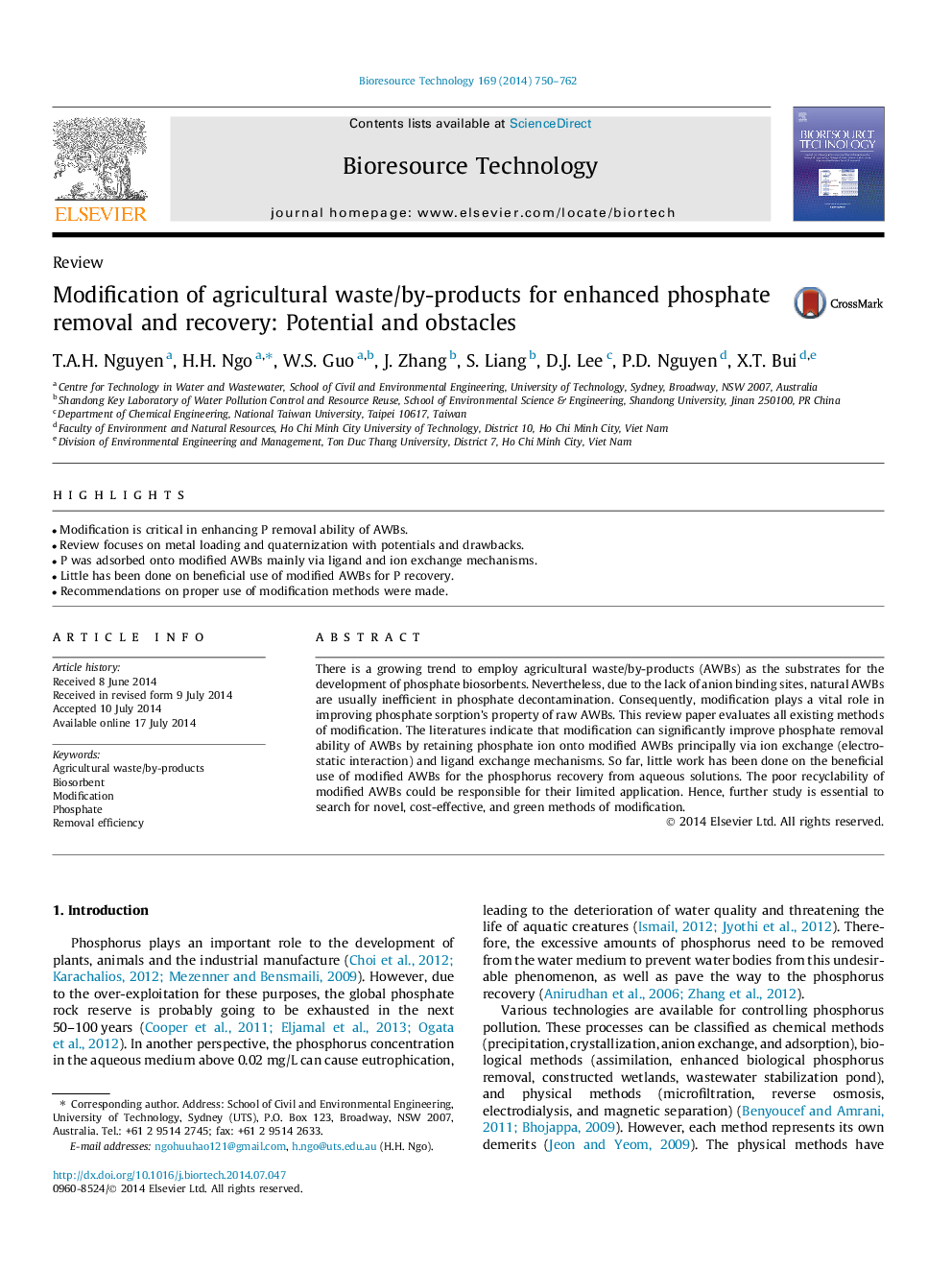| Article ID | Journal | Published Year | Pages | File Type |
|---|---|---|---|---|
| 680599 | Bioresource Technology | 2014 | 13 Pages |
•Modification is critical in enhancing P removal ability of AWBs.•Review focuses on metal loading and quaternization with potentials and drawbacks.•P was adsorbed onto modified AWBs mainly via ligand and ion exchange mechanisms.•Little has been done on beneficial use of modified AWBs for P recovery.•Recommendations on proper use of modification methods were made.
There is a growing trend to employ agricultural waste/by-products (AWBs) as the substrates for the development of phosphate biosorbents. Nevertheless, due to the lack of anion binding sites, natural AWBs are usually inefficient in phosphate decontamination. Consequently, modification plays a vital role in improving phosphate sorption’s property of raw AWBs. This review paper evaluates all existing methods of modification. The literatures indicate that modification can significantly improve phosphate removal ability of AWBs by retaining phosphate ion onto modified AWBs principally via ion exchange (electrostatic interaction) and ligand exchange mechanisms. So far, little work has been done on the beneficial use of modified AWBs for the phosphorus recovery from aqueous solutions. The poor recyclability of modified AWBs could be responsible for their limited application. Hence, further study is essential to search for novel, cost-effective, and green methods of modification.
